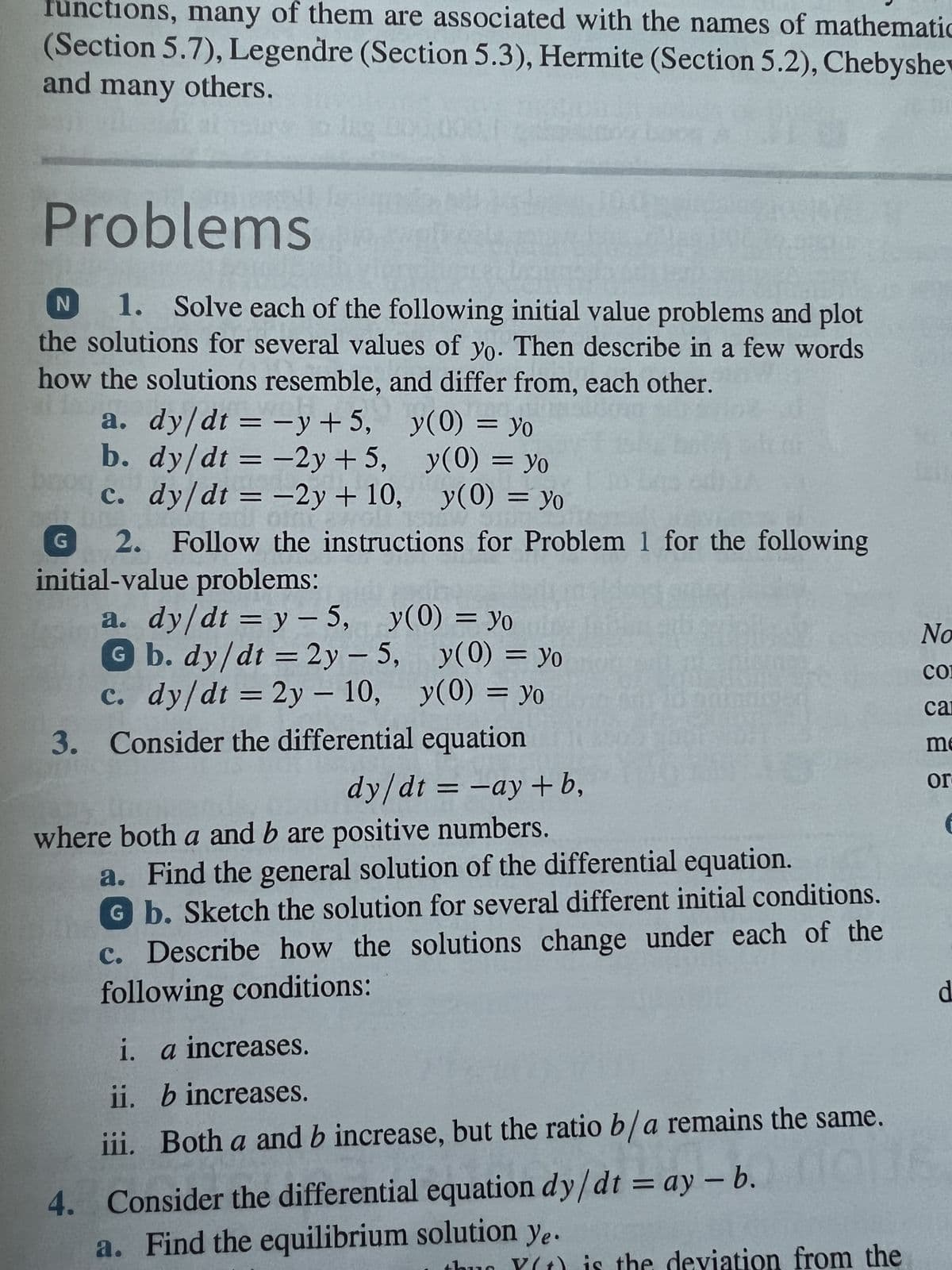N 1. Solve each of the following initial value problems and plot the solutions for several values of yo. Then describe in a few words how the solutions resemble, and differ from, each other. a. dy/dt = -y +5, b. dy/dt = -2y +5, c. dy/dt = -2y + 10, y(0) = Yo y(0) = yo y(0) = yo
N 1. Solve each of the following initial value problems and plot the solutions for several values of yo. Then describe in a few words how the solutions resemble, and differ from, each other. a. dy/dt = -y +5, b. dy/dt = -2y +5, c. dy/dt = -2y + 10, y(0) = Yo y(0) = yo y(0) = yo
Algebra & Trigonometry with Analytic Geometry
13th Edition
ISBN:9781133382119
Author:Swokowski
Publisher:Swokowski
Chapter5: Inverse, Exponential, And Logarithmic Functions
Section5.6: Exponential And Logarithmic Equations
Problem 64E
Related questions
Question
1 pl

Transcribed Image Text:functions, many of them are associated with the names of mathematic
(Section 5.7), Legendre (Section 5.3), Hermite (Section 5.2), Chebyshev
and many others.
Problems
N
1. Solve each of the following initial value problems and plot
the solutions for several values of yo. Then describe in a few words
how the solutions resemble, and differ from, each other.
a. dy/dt = -y +5,
b. dy/dt = -2y +5,
c. dy/dt = -2y + 10,
G
2. Follow the instructions for Problem 1 for the following
initial-value problems:
-
a. dy/dt = y = 5, y(0) = yo
y(0) = yo
y(0) = yo
y(0) = yo
G b. dy/dt = 2y =
-
c. dy/dt = 2y - 10,
3. Consider the differential equation
5,
y(0) = Yo
y(0) = yo
dy/dt = -ay+b,
where both a and b are positive numbers.
a. Find the general solution of the differential equation.
Gb. Sketch the solution for several different initial conditions.
c. Describe how the solutions change under each of the
following conditions:
i. a increases.
ii.
b increases.
iii. Both a and b increase, but the ratio b/a remains the same.
4. Consider the differential equation dy/dt = ay - b.
a. Find the equilibrium solution ye.
Y(t) is the deviation from the
No
CO
car
me
or
€
d
Expert Solution
This question has been solved!
Explore an expertly crafted, step-by-step solution for a thorough understanding of key concepts.
This is a popular solution!
Trending now
This is a popular solution!
Step by step
Solved in 4 steps with 4 images

Recommended textbooks for you

Algebra & Trigonometry with Analytic Geometry
Algebra
ISBN:
9781133382119
Author:
Swokowski
Publisher:
Cengage

Algebra & Trigonometry with Analytic Geometry
Algebra
ISBN:
9781133382119
Author:
Swokowski
Publisher:
Cengage